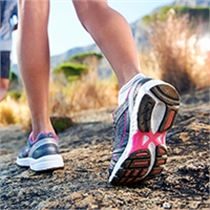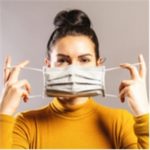
The COVID Pandemic has forced closure of indoor gyms and pushed those who crave regular exercise to shift to other options. Fortunately, Southern California is an ideal location for year round outdoor activities (air quality allowing) such as walking, hiking, and running. It’s not unusual, however, for enthusiasts to develop certain skin conditions. Some of the most common include:
- Blisters may develop on the feet due to excessive friction. Risks factors include poorly fitting shoes, heat, moisture, and overdoing it. Blisters can be prevented with proper fitting shoes, wearing moisturizer wicking sports socks, use of topical antiperspirants, and bandages at pressure points.
- Jogger’s nipples occur secondary to chaffing in men who wear shirts made of coarse fabrics and women who run without a bra. This painful condition can be prevented by silk or other soft fiber shirts and use of topical antibiotic ointment, petroleum jelly, or patches while running to prevent rubbing/irritation.
- Jogger’s toe is a blue black discoloration typically found on the longest toe/toenail. This manifestation of repeated trauma is especially common in those who run downhill. It’s prevented by wearing proper fitting shoes and trimming toenails short.
- Talon noir is blue black discoloration of the heel and is cause by repetitive shearing forces on the heel leading to damage of the underlying capillaries. This, too, can be prevented by wearing proper fitting shoes and cushioned socks.
- Athlete’s foot (tinea pedis) and fungal infection of the toenail (onychomycosis) are more common in active individuals. Predisposing factors include trauma, occlusion, sweating (all occur to varying degrees while exercising while wearing shoes), and use of communal showers. Prevention includes well ventilated shoes and socks, removing shoes and socks promptly following exercise, wearing sandals in showers and other communal areas.
- Sun burn and skin cancer risk are elevated with increased exposure to UV radiation from the sun. The cumulative amount of UV exposure in a lifetime increases the risk for basal cell carcinoma, squamous cell carcinoma, and melanoma. Exercising early or late in the day, application of broad spectrum sunscreen with minimum SPF 30, wearing sun protective clothing, hats, and sunglasses can significantly reduce risk.


